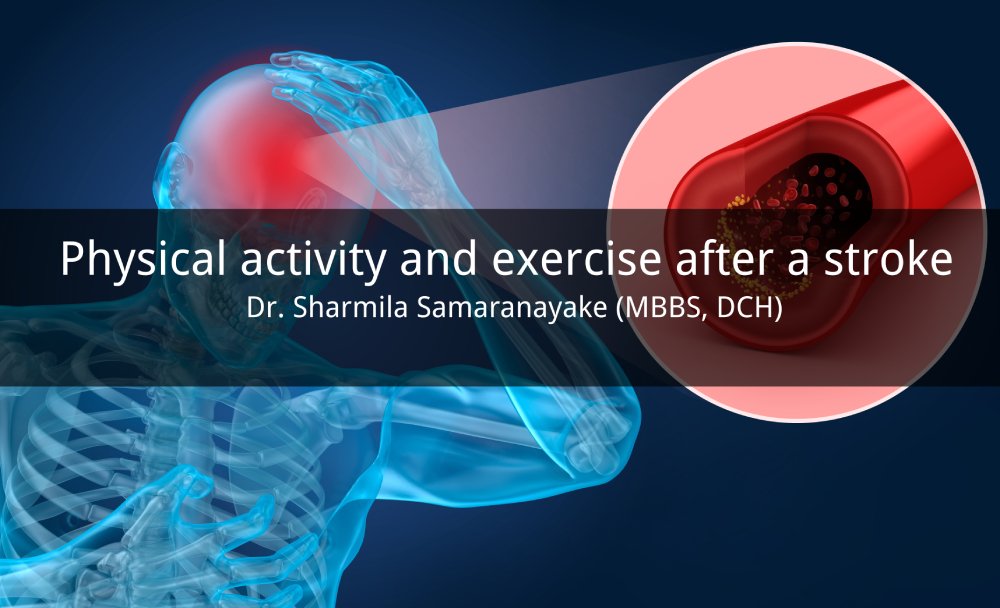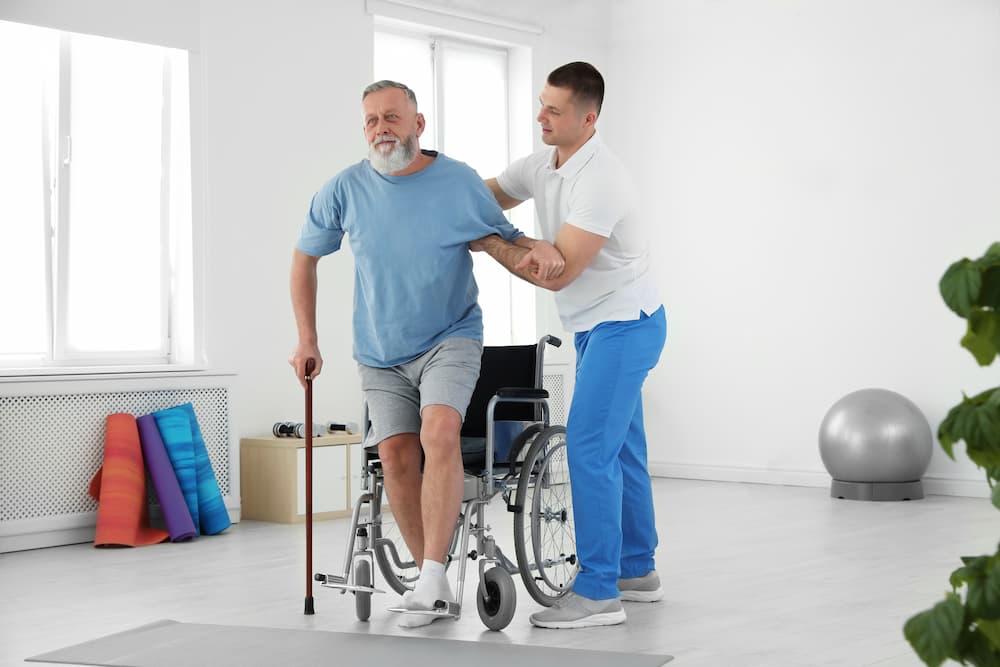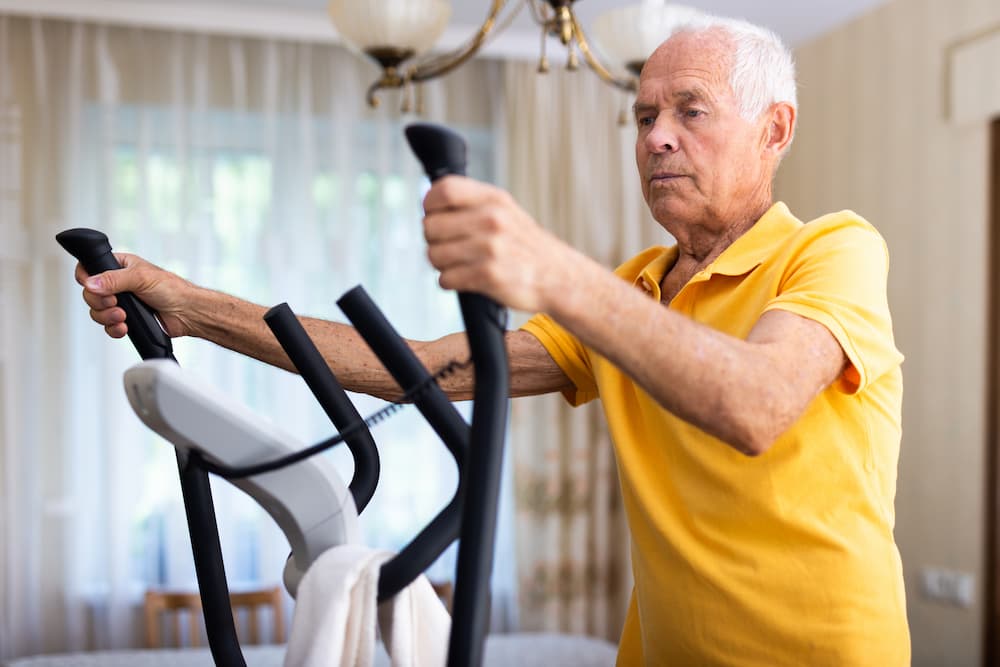A stroke occurs when the blood supply to part of your brain is reduced or interrupted. This prevents your brain tissue from getting sufficient oxygen and nutrition.
Within minutes your brain cells will start to die. Therefore, a stroke is a medical emergency.
While prompt treatment is pivotal for survival, early action can reduce the damage to your brain. The good news is that most people don’t die of strokes. With effective management and rehabilitation, disability can be prevented or minimized.
Stroke recovery and rehabilitation
The impact of your stroke depends on the area of your brain and the amount of tissue damaged. Following emergency treatment, patients will be monitored closely for some time.
Rehabilitation will start within a day or two once you are stable. When you’re out of danger, doctors will help you recover as much function as possible and return to living independently.
A stroke may affect you in many ways. Sometimes the disability may not be evident immediately. So, you will have to wait and see how it has affected you in the long run.
Whatever the disability, you shouldn’t get disheartened. Work together with your rehabilitation team to achieve the best recovery possible.
What happens after a stroke?
Post-stroke symptoms 3 include:
- Paralysis (inability to move parts of your body), weakness on one or both sides of your body
- Problems with balance and coordination of movements
- Trouble with thinking, attention, awareness, learning, memory, and judgment.
- Problems understanding and forming speech
- Trouble expressing emotions
- Pain in the hands and feet which worsens with movement
- Change in temperature sensation
- Fatigue and feeling tired even during simple tasks
- Numbness and feeling strange sensations
- Trouble with swallowing or chewing
- Problems with bladder and bowel control
Recovery following a stroke is different for everyone. Some recover, while others have long-term complications and disabilities.
Getting your functional ability back may take weeks, months, or even years. As a stroke survivor, you’ll need to attend a rehabilitation program.
Your doctor will consider:
- Your age
- Degree of disability from the stroke
- Your overall health
- Your lifestyle, interests, and priorities
- Availability of caregivers and family members
Rehabilitation usually begins before you leave the hospital.
You can continue your program as an outpatient or at home after discharge.
You can obtain the services of a multidisciplinary team, including your doctor, physical therapist, occupational therapist, nurse, psychologist, etc., depending on your condition, as every person’s stroke recovery is different.
Your rehabilitation team will suggest that you do your exercises throughout the day. The best benefit is when you do these exercises in a repeated fashion.
You may not feel comfortable with physical activities.
Don’t give up!
You will receive the maximum benefits of exercise while reducing pain and muscle stiffness.
What are the essential aspects of stroke rehabilitation?
- Physical therapy to help you learn movement and coordination skills you may have lost because of your stroke.
- Speech therapy will help if you have problems of understanding and producing speech.
- Occupational therapy will focus on improving daily activities like eating, drinking, dressing, writing, bathing, etc.
This article will clarify physical therapy, where you will find answers to common questions regarding physical activity and exercise following a stroke.
Research has shown that working out and improving your physical fitness helps your body recover sooner from a stroke.
If you can stick to your exercise routine for at least six months, these benefits will be visible, and continuing further will improve your physical fitness.
Why should you exercise after a stroke?
According to stroke statistics, more than 795,000 people in the United States have a stroke yearly.
About 610,000 of these are first or new strokes. Approximately 185,000 strokes are in people who have had a previous stroke.
We also know that you will gradually get back to your maximum potential after a stroke. Physical activity and exercise will help you slowly reach your full potential.
You will see that a second stroke is quite common after the first stroke.
Exercise after a stroke is vital not only for improving your disabilities but also for preventing future strokes. Therefore, it is essential to do regular physical activities as it prevents future strokes 10.
A personalized after-stroke fitness plan improves your safety as well as self-respect.
How should you re-integrate exercise into your life healthily and productively?
You may feel the urge to return to where you were, especially if you had an active lifestyle before your stroke.
It is essential to take it slow. You can start with simple activities and gradually increase the frequency and duration.
Rehabilitation exercises
During rehabilitation, you will most likely be working with a team who will help you with:
- Everyday actions like picking up objects, opening doors, and getting in and out of cars
- Sitting to standing position and back
- Standing to squat position and back
- Walking
After being hurt and unable to move following a stroke, you will experience multiple challenges as a survivor.
Your physical impairment might lead to depression and anxiety.
Exercise, in general, improves both your physical fitness as well as your mental well-being.
Even if you start slowly, physical fitness is essential to help you recover faster. It will also prevents you from a second stroke.
Exercise after stroke
Physical activity varies for each patient. Stroke has a specific effect on each person.
Some of you who find walking difficult may have to get trained as the first step of rehabilitation. Exercise should be aimed at improving the specific disability.
How do you start your exercise program following a stroke?
Stroke survivors will need a consultation with a medical practitioner and a physiotherapist.
Following the evaluation by your medical practitioner, you will get guidelines on how soon, how often, and to what extent you should perform physical activities.
This evaluation will help customize your exercise program and is a great stroke rehabilitation agenda.
After the assessment, your doctor will help you to set achievable goals.
What are the guidelines for exercise after a stroke?
Your ability level to complete your exercise routine is the most critical factor when developing an exercise program.
For example, some patients need to improve their walking habits to develop motivation to perform aerobic exercises consistently.
Some patients tolerate walking exercises and aerobics while experiencing mild secondary side effects.
The American heart association has recommended best practices for stroke prevention and rehabilitation.
What is the importance of stroke exercise for rehabilitation and recovery?
Stroke exercises can be a very effective and efficient way of healing and strengthening the muscles of stroke survivors.
Physical inactivity will be a definite disadvantage. Neuroplasticity is a unique ability of the brain cells.
Our brain cells can be repaired and rewired by removing damage to cells and other structures.
The healthy cells can take over the tasks done earlier by the damaged ones. Neuroplasticity of stroke survivors will help recover lost mobility and function.
The key is to perform consistent and repetitive actions so your mind will learn new techniques.
What are the common physical challenges faced by stroke survivors?
A stroke will lead to severe brain damage, and the disability will vary from mild to severe.
Almost all stroke survivors experience some sort of physical damage. Motor and sensory systems may be affected, impairing your walking ability and even simple day-to-day activities like eating and washing clothes.
What is aerobic conditioning?
The heart association recommends 30-50 minutes of moderate aerobic exercise for a healthy lifestyle.
What are the resistance exercises for strengthening muscles?
Resistance exercise training helps to improve your physical strength, stability, mobility, stamina, and endurance. It is very advantageous when you are recovering from a stroke.
Here is a video to show you some physical activities you can practice at home for stroke recovery.
What are the physical and mental health benefits of stroke recovery exercises?
Stroke recovery exercises will improve your physical fitness. While improving your physical health also prevents you from getting a second stroke10.
You may already know about the emotional consequences of a stroke, such as depression and anxiety.
Physical activities help relieve psychological issues which come up for stroke patients.
Once you start your exercise routine, you will feel more connected with the community, and your social well-being will naturally increase9.
What exercise is best following a stroke?
- Group fitness activities – Most healthcare providers advise stroke survivors to engage in group exercise activities. Ex: Zumba, water aerobics, pilates, yoga, spinning
- Aerobic activities like swimming, cycling, walking, and running are great for cardiovascular conditioning. Start slowly and gradually increase the duration of your routine.
- Your muscles can degenerate (thinning and wasting of muscle tissue) because of the inactivity of muscles following the stroke, especially during the hospital stay and afterward. Strength training will help to reverse your muscle atrophy. Strength training by light weights and incorporating light resistances will help regain muscle strength. In strength training programs, you will use light weights. Do your strength exercise 2- 3 days per week, which involves all your major muscle groups. You should talk to your trainer to see how many sets you can complete.
- Gait training exercises will improve your independence. Gait training is vital as it will help you get back to your activity level before the stroke. It will also improve your tolerance for prolonged physical activities 5
- Stretching often helps to increase your flexibility. If you stretch before and after your exercises, your movements, such as raising arms and moving your legs will be easier to execute.
- If you have lost your sense of balance after the stroke, it is essential to incorporate 2-3 sessions of balance and coordination training exercises into your routine.
- Core exercises are recommended for patients at risk of falling. Your core muscles are the muscles that are deep within the abdomen and back and attach to your spine and back. Core exercises will help to strengthen those muscles.
- Range of motion exercises will improving flexibility, and also prevent contractures. Contractures are tight and highly stiff muscles following a stroke.
- Leisure group activities like Walking together, biking or hiking is another improve mental and physical health.
The community element in your fitness journey will give you motivation and strength to reintroduce fitness into your life after an unexpected event. A community will motivate you while providing emotional support for one another.
Discuss an exercise routine with your medical team and get advice on how to get started.
Why is repetition necessary when doing physical exercises following a stroke?
Physical therapy and rehabilitation focus on training your nerves and muscles to communicate.
Some physical therapists refer to this as neuromuscular training.
As described earlier, neuromuscular training can help you to restore movements by activating neuroplasticity.
It means the brain’s natural ability to learn new skills and reorganize itself.
This way, stroke survivors can recover lost abilities such as walking, eating, and dressing.
Repetition of exercises stimulates neuroplasticity.
How do you build strength after a stroke?
A stroke will weaken your muscles leading to atrophy if you don’t exercise. You can build strength with strength training exercises.
Research suggests that strength training alone can improve your muscle strength. Further research is needed to optimize strength training and how to transfer these strength gains to functional tasks in stroke patients.
Summary
Stroke is the leading cause of severe and long-term adult disability7; the absolute number of individuals with stroke is increasing due to an aging adult population, coupled with an ever-improving survival rate following stroke8.
Post-stroke recovery is to regain your functional ability and physical fitness. Therefore, it is crucial to engage in rehabilitation exercises. When doing so, repetition is essential to allow your brain’s neuroplasticity to activate and improve your functions.
In addition, stroke rehabilitation exercises will prevent you from a recurrent stroke which is an immense benefit.
References:
- https://www.mayoclinic.org/diseases-conditions/stroke/symptoms-causes/syc-20350113
- https://www.mayoclinic.org/diseases-conditions/stroke/diagnosis-treatment/drc-20350119
- https://www.cdc.gov/stroke/treatments.htm
- https://www.cdc.gov/stroke/facts.htm
- https://www.flintrehab.com/exercise-after-stroke-guidelines/#:
- https://www.ncbi.nlm.nih.gov/pmc/articles/PMC3524263/
- American Heart Association. Heart Disease and Stroke Statistics 2004 Update. Dallas, Texas: American Heart Association; 2003. [Google Scholar]
- Heart and Stroke Foundation of Canada. The Growing Burden of Heart Disease and Stroke in Canada. Ottawa, Canada: Heart and Stroke Foundation of Canada; 2003. [Google Scholar]
- https://www.ahajournals.org/doi/full/10.1161/STR.0000000000000098
- https://www.ncbi.nlm.nih.gov/pmc/articles/PMC3263535/



